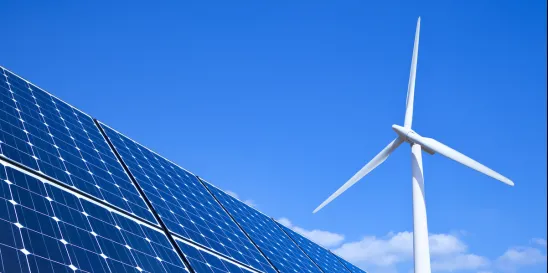The regulated community faces a complex and evolving landscape. As we head into 2024, our team of energy, environmental, and environmental, social, and governance (ESG) attorneys provide insights and guidance on how to navigate the changing environment.
While these challenges may not be new, their significance continues to grow. We recently released our 2023 “Top 10” lists for Environmental & Energy and ESG, outlining the biggest challenges we encountered last year. Below, we summarize nine issues likely to surface as we head into 2024.
Federal Regulatory Priorities
The Biden Administration’s Fall 2023 regulatory Unified Agenda was released December 6. US Environmental Protection Agency (EPA) Administrator Michael Regan indicated that EPA intends to “aggressively deliver” on President Biden’s “climate and environmental agenda.” In general, EPA’s portion of the Unified Agenda shows that past priorities — including updates to its greenhouse gas reporting rule — largely remain on track. EPA’s efforts to designate certain Per- and polyfluoroalkyl substances (PFAS) chemicals as CERCLA “hazardous substances” are now scheduled for March 2024. (We discuss PFAS issues in greater detail below.) Finally, EPA now intends to release an effluent limitation guideline for the category consisting of organic chemicals, plastics, and synthetic fibers in May 2024.
Environment, Social, and Governance
ESG issues will continue to be a high priority for the regulated community in 2024. Three issues are worth watching:
- First, “anti-ESG” litigation will continue with the lead case this year being in New York State Court. This case, Wong v. New York Employers’ Retirement System, is a New York state breach of fiduciary duty case alleging that teachers’ retirement system plan administrators breached their duty to plan participants by divesting from fossil-fuel related businesses. The complaint in the case hitches on to political pressure from politicians, and initial unease of plan administrators, to say that factoring in divestment cost plan participants money and was made for ideological reasons as many fossil-fuel tied companies in the energy industry have had record profits in recent years.
- Second, we will see sustainability reporting move from voluntary to mandatory with concrete requirements for how companies measure and report on sustainability metrics. We expect the US Securities and Exchange Commission (SEC) to finalize the climate-related disclosures rule, following three California climate disclosure bills finalized in 2023. (See our discussion here.) Public companies will likely be required to report anywhere from 2024 onward, putting them in the difficult position of setting internal goals and making public disclosures that are consistent with regulatory requirements but at the same time do not to create risk of litigation or noncompliance. Given the recent rise in anti-ESG sentiment, the 2024 election year a tug of war between ESG supporters and deniers in the United States.
- Third, we likely will see social-focused cases have a higher priority in the ESG space in 2024, such as, for example, one regarding the federal government and many businesses to use “sustainable” fuels. Some of the fuel manufacturing processes use plastic as a feedstock, giving rise to “greenwashing” allegations, and the some of the processing locations are in “environmentally overburdened” communities. (For details, see here.) The confluence between new processes, “greenwashing,” and environmental justice (EJ) issues may represent a perfect storm in terms of future litigation.
Supreme Court Cases to Watch
The two issues to watch at the US Supreme Court level: the fate of “Chevron” deference and regulatory “takings.” Summaries:
- “Chevron” deference. The concept of administrative deference — i.e., that the courts should defer to relevant agencies' interpretations of ambiguous statutes they are tasked to administer — is a key component to the modern regulatory state. With a paired set of cases –Loper Bright Enterprises v. Raimondoand Relentless, Inc. v. Dept. of Commerce– the Court will evaluate the continued viability of Chevron deference under which courts defer to agencies’ technical decisions related to the statutes they administer. (Our most detailed discussion of this issue is here.)
- Regulatory takings. In Sheetz v. County of El Dorado, California, the Supreme Court will evaluate whether “impact fees” associated with permits can violate the Fifth Amendment to the US Constitution. At stake is the determination of when, how, and under what circumstances state and local governments can require fees or other conditions in exchange for land-use permit approvals. (Our detailed discussion is here.)
Continued Focus on Plastic and Petrochemicals
In 2023, regulators at all levels addressed plastic — including pollution prevention, recycling initiatives, and extended producer responsibility.
Internationally, at COP28 (the United Nations (UN) Climate change Conference currently taking place through December 12), Inger Andersen, the Under-Secretary-General of the UN and Executive Director of the UN Environment Programme (UNEP) delivered a speech highlighting the climate impact of plastic and plastic production and calling for a road to a global plastics treaty.).
At the federal level, two recycling-related bills were introduced in Congress. The Recycling and Composting Accountability Act would allow the EPA to collect and create a database tracking recycling and composting programs. The Recycling Infrastructure and Accessibility Act of 2023 allows EPA to establish a pilot program to improve recycling accessibility in underserved communities.
And at the state level, at least seven states proposed EPR packaging legislation in 2023. Other states, like California, passed additional legislation, such as The Plastic Pollution Prevention and Packaging Producer Responsibility Act (SB 54) which seeks to address the impact of single-use packaging and plastic food service ware, in part, by reducing the use of single-use plastic packaging by 25% by 2023.
The focus on plastic regulation is expected to continue in 2024. Many initiatives introduced in past years will take effect in 2024. For example, in 2022, UNEP resolved to complete a draft of a globally binding agreement on plastic pollution by 2024. UNEP released its “zero draft” in September 2023, which is expected to be refined next year. Similarly, EPA issued its draft National Strategy to Prevent Plastic Pollution this year that drew criticism from a group of state attorneys general who called on the EPA to withdraw and redraft the draft document. Several state-level EPR packaging-related laws have compliance dates that also start in 2024, including California’s SB 54 and New Jersey’s recycled content standards. With regulators clearly focused on plastic regulation and reduction, industry has similarly focused on how it might work with regulators to ensure compliance with upcoming legislation, promote their own sustainability initiatives, and potentially shift some of their manufacturing to plastic alternatives.
Environmental Justice
Federal, state, and local regulators have all worked aggressively to address EJ issues in recent years and we expect these efforts to continue. Some predictions:
- Federal, state, and local EJ prioritization will continue in 2024. EJ will have a role in virtually every aspect of environmental law from the regulatory process through permitting and enforcement. The Biden Administration’s “whole of government” approach will continue. (See here for examples.)
- At the federal level, as we get closer to the election, we may begin to see EJ efforts tailored to support political ends. Funding and visits from key regulatory personnel may be highlighted in certain parts of the country to support political ends.
- Efforts to develop science supporting key EJ concepts like cumulative impact will continue. This week, we’ve seen EPA highlight cardiorespiratory concerns highlighted related to a lead pipe replacement program. Regulators may work to develop closer support between public health and policy goals.
- EJ will continue to drive how regulators prioritize their enforcement resources. And EJ will also likely play a significant role in the ultimate resolution of enforcement matters. (For more on this, see here and here.)
- Related to permitting, EJ issues to be prioritized, both for new permits, and renewal of existing permits. We have already seen EJ issues directly impact the permitting process at locations across the country and we expect this to continue. (We discuss steps regulated parties can take to minimize these risks here.)
- EJ issues may begin to surface increasingly in relation to projects like pipeline and transmission line siting and development.
PM NAAQS
EPA is primed to strengthen National Ambient Air Quality Standards (NAAQS) for fine particulate matter (PM), known as PM2.5 (particulate matter smaller than 25 micrometers) in 2024. The revised standard, if promulgated, will have near immediate and significant permitting and operating implications on sources of air pollution across the country.
On January 27, 2023, EPA proposed to lower the current PM2.5 long-term (annual) standard of 12.0 micrograms per cubic meter (ug/m3) to a value between 9.0 to 10.0 ug/m3 (EPA requested comments on an even lower standard of 8.0 ug/m3). Revision of the NAAQS will trigger a mandatory process under the Clean Air Act for states and EPA to determine which areas within each state “attain” (attainment/unclassifiable) or do not attain (nonattainment) the revised annual PM2.5 NAAQS. Revisions to the State Implementation Plans (SIPs) are then required within 18 months of such designations, designed to reduce emissions of PM2.5 in nonattainment areas to achieve compliance with the revised PM2.5 annual NAAQS.
The lowering of the annual PM2.5 NAAQS to 9.0 to 10.0 ug/m3 brings the NAAQS standard precariously close to existing background concentrations of PM2.5 in many states. This will have significant implications on the ability of sources to obtain permits to construct or modify their existing operations, particularly in cases where ambient air quality modeling is needed to demonstrate that a proposed project will not cause or contribute to a violation of the NAAQS (a demonstration that would be near impossible if the facility is located in an area that already exceeds the revised PM2.5 NAAQS). The revised standard will also have significant implications for environmental justice areas like those discussed above.
On June 27, 2023, the White House Environmental Justice Advisory Council issued a letter requesting that EPA lower the annual PM2.5 NAAQS to 8.0 ug/m3 to protect public health disparities in EJ communities, or, alternatively, that such a limit apply specifically in EJ areas. Regardless of whether EPA decides to lower the annual PM2.5 NAAQs to 8.0 rather than 9.0-10.0 ug/m3, the strengthening of the standard will serve to impose additional burdens and restrictions on the regulated community in and around existing and threatened EJ areas.
Coal Combustion Residuals
EPA’s efforts to compel the investigation, characterization, and remediation of legacy coal combustion residuals (CCR) will continue in 2024:
- On May 18, 2023, EPA proposed a rule to regulate legacy CCR surface impoundments and a new category of unit called CCR management units. The proposal would require owners and operators of power plants to identify CCR management units and to engage in closure and corrective action activities for legacy CCR surface impoundments and CCR management units. EPA is reviewing comments on the proposed rule.
- EPA is currently under a deadline to finalize a legacy CCR surface impoundment rule by May 6, 2024 under a Consent Decree entered in Statewide Organizing for Community eMpowerment v. EPA, No. 22-cv-2562-JDB (D.D.C.).
Per- and Polyfluoroalkyl Substances
Like CCR, EPA has prioritized addressing health risks associated with PFAS. Since 2021, EPA has been engaged in action to address risk assessment, monitoring and regulation of PFAS through its “PFAS Strategic Roadmap.” 2024 marks the last year addressed through EPA’s roadmap. EPA is currently considering comments on a proposed rule to designate the PFAS chemicals commonly referred to as PFOA and PFOS as hazardous substances under Comprehensive Environmental Response, Compensation, and Liability Act (CERCLA), and an advance notice of proposed rulemaking regarding the designation of seven additional types of PFAS as hazardous substances under CERCLA. Movement on both of these rulemakings is likely in the next year. EPA also has a pending rulemaking to establish National Primary Drinking Water Standards for PFOS, PFOA and mixtures of certain other PFAS. EPA has a stated goal of finalizing this rulemaking by the end of 2023. To the extent a final rule on is not promulgated by the end of 2023, finalization is likely in 2024.
In addition to continued regulation of PFAS, EPA has added addressing exposure to PFAS as one of its National Enforcement and Compliance Initiatives for the years 2024-2027. EPA has noted it will increase enforcement actions to address PFAS “endangerment issues” as they arise. EPA has stated its initial goals under this initiative include: (1) identifying and characterizing PFAS contamination near manufacturing and use facilities under CERCLA, the Resource Conservation and Recovery Act, the Clean Water Act, and the Safe Drinking Water Act; (2) performing oversight of PFAS characterization and control activities at federal facilities to ensure compliance and also to serve as a model for the regulated community; and (3) addressing statutory/regulatory violations and substantial endangerment situations by major PFAS manufacturers, federal facilities, and other industrial parties who have significantly contributed to releases of PFAS into the environment.
Increased State and Local Regulation
Finally, recent years have seen more aggressive efforts by states to themselves regulate the environment. Examples include New York’s recent “Green Amendment,” New Jersey’s recent EJ laws, or, most notably, various climate-related tort and procedural cases pending in various states. (See here, here, and here.) Similarly, local regulators may continue to attempt to use building codes, plastic bag bans, and other efforts to address environmental concerns. We expect these efforts to continue into 2024.








 />i
/>i

